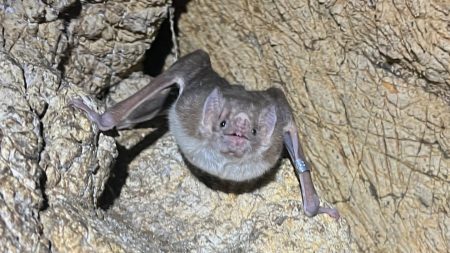Recent reports indicate that more than one-third of the world’s tree species are at risk of extinction, as announced by the International Union for the Conservation of Nature (IUCN) in its updated Red List. This alarming statistic encompasses various species, from tropical magnolias to mountainous pines, highlighting that trees now represent over a quarter of the total species on the Red List. The crisis of tree extinction spans nearly every country and emphasizes a global environmental emergency. It underscores an urgent need for conservation efforts and strategies to mitigate this looming threat, as trees play a crucial role in maintaining ecological balance, supporting biodiversity, and combating climate change.
One significant factor contributing to the vulnerability of trees in the face of climate change may be the relationship they have with underground fungi known as ectomycorrhizal fungi. These fungi form symbiotic connections with the roots of most tree species, providing essential nutrients and water for their survival. However, the ongoing challenges posed by climate change, particularly rising temperatures and drought conditions, may also be impacting these fungi’s ability to thrive and adapt. Researchers are still deciphering the complex dynamics of tree-fungi interactions amid changing climate conditions, which introduces additional uncertainty into the survival prospects of various tree species.
Michael van Nuland, a scientist specialized in soil microbes and tree-fungi relationships, emphasizes the critical nature of these interactions. His research involves studying the ecological implications of climate change on both aboveground and belowground life forms. In a recent study published in the Proceedings of the National Academy of Sciences (PNAS), van Nuland and his colleagues investigated how climate change is affecting the spatial overlap between trees and their corresponding underground fungi. By analyzing the distribution data of numerous North American tree and fungal species, they aimed to understand how potential habitat suitability would evolve, considering future climate scenarios and the responses of both trees and fungi.
The findings of the study illustrated a concerning trend: while suitable habitats for both trees and fungi are expected to shift northward toward cooler and wetter conditions, approximately 35% of tree-fungi interactions are at risk due to shrinking available habitats. This reduction poses a dire challenge, as trees rely on specific types of fungi for survival—without these partnerships, their capacity to migrate northward in response to climate changes diminishes significantly. The research calls for a deeper understanding of the vital role mycorrhizal associations play in conservation efforts if there is a desire to maintain tree diversity and mitigate extinction risks.
Van Nuland’s observations revealed that the proportion of tree-fungi pairs experiencing habitat shrinkage was lower than anticipated, possibly suggesting a conservative estimation of the problem. It highlights a different aspect of habitat loss, focusing not solely on physical space but also on the functionality of ecosystems. The interplay between species—the loss of vital organisms like fungi can have detrimental repercussions for trees, akin to lacking the appropriate climatic conditions that facilitate survival. Furthermore, human activities, such as deforestation, exacerbate the threats faced by fungi, leading to a significant deterioration of belowground networks crucial for tree health and sustainability.
Ultimately, the study indicates that the diversity of soil fungi plays a pivotal role in facilitating tree movement across landscapes as they adapt to changing climates. Trees capable of migrating effectively tend to be situated in areas with higher soil fungal diversity, which increases their chances of forming successful partnerships. This symbiotic relationship is critical in allowing trees to harness the benefits provided by fungi, thereby unlocking their potential to survive. Given these findings, future conservation strategies must prioritize understanding and protecting both tree and fungal species interactions to combat the looming threats posed by climate change and habitat loss effectively.














